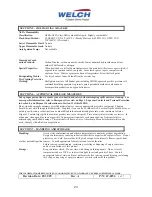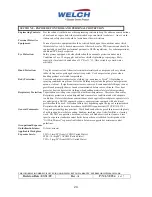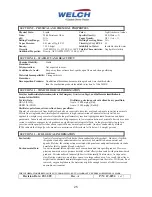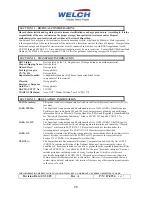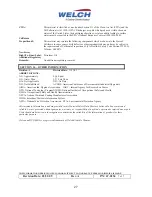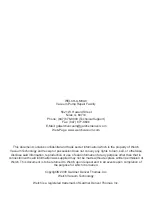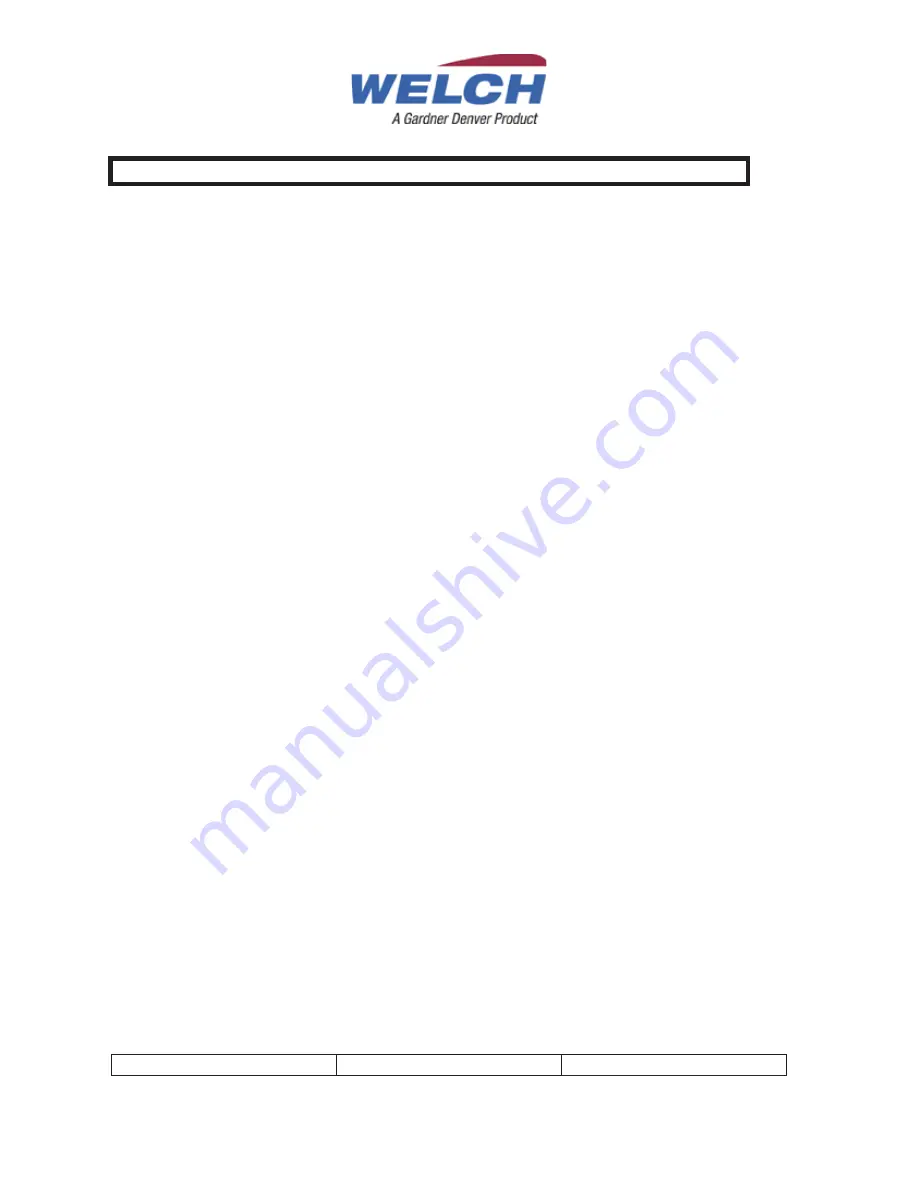
24
THE INFORMATION HEREIN IS GIVEN IN GOOD FAITH, BUT NO WARRANTY, EXPRESS OR IMPLIES, IS MADE.
Revision Date: 03/31/09
Rev. A
P/N: 67-0254
4 of 7
SECTION 8 - EXPOSURE CONTROLS AND PERSONAL PROTECTION
Engineering Controls:
Provide exhaust ventilation or other engineering controls to keep the airborne concentrations
of mists and/or vapors below the recommended exposure limits (see below). An eye wash
station and safety shower should be located near the work-station.
Personal Protective
Equipment:
Personal protective equipment should be selected based upon the conditions under which
this material is used. A hazard assessment of the work area for PPE requirements should be
conducted by a qualified professional pursuant to OSHA regulations. For certainoperations,
additional PPE may be required.
Eye Protection:
Safety glasses equipped with side shields should be adequate protection under most
Conditions of use. Wear goggles and/or face shield if splashing or spraying is likely,
especially if material is heated above 125°F(or 51°C). Have suitable eye wash water
available.
Hand Protection:
Use gloves constructed of chemical resistant materials such as neoprene or heavy nitrate
rubber if frequent or prolonged contact is expected. Use heat-protective gloves when
handling product at elevated temperatures.
Body Protection:
Use clean and impervious protective clothing (e.g., neoprene or Tyvek
®
) if splashing or
spraying conditions are present. Protective clothing may include long-sleeve outer garment,
apron, or lab coat. If significant contact occurs, remove oil-contaminated clothing as soon as
possible and promptly shower. Launder contaminated before reuse or discard. Wear heat
protective boots and protective clothing when handling material at elevated temperatures.
Respiratory Protection:
Vaporization or misting is not expected at ambient temperatures. Therefore, the need for
Respiratory protection is not anticipated under normal use conditions and with adequate
ventilation. If elevated airborne concentrations above applicable workplace exposure levels
are anticipated, a NIOSH-approved organic vapor respirator equipped with a dust/mist
prefilter should be used. Protection factors vary depending upon the type of respirator used.
Respirators should be usedin accordance with OSHA requirements (29 CFR 1910.134).
General Comments:
Use good personal hygiene practices. Wash hands and other exposed skin areas with plenty
of mild soap and water before eating, drinking, smoking, use of toilet facilities, or leaving
work. DO NOT use gasoline, kerosene, solvents, or harsh abrasive skin cleaners. Since
specific exposure standards/control limits have not been established for this product, the
“Oil Mist, Mineral” exposure limits shown below are suggested as minimum control
guidelines.
Occupational Exposure
GuidelinesSubstance:
Oil mist, mineral
Applicable Workplace
Exposure Levels:
TWA: 5 (mg/M
3
) from ACGIH (United States)
STEL: 10 (mg/M
3
) ACGIH (United States)
TWA: 5 (mg/M
3
) from OSHA (United States)














